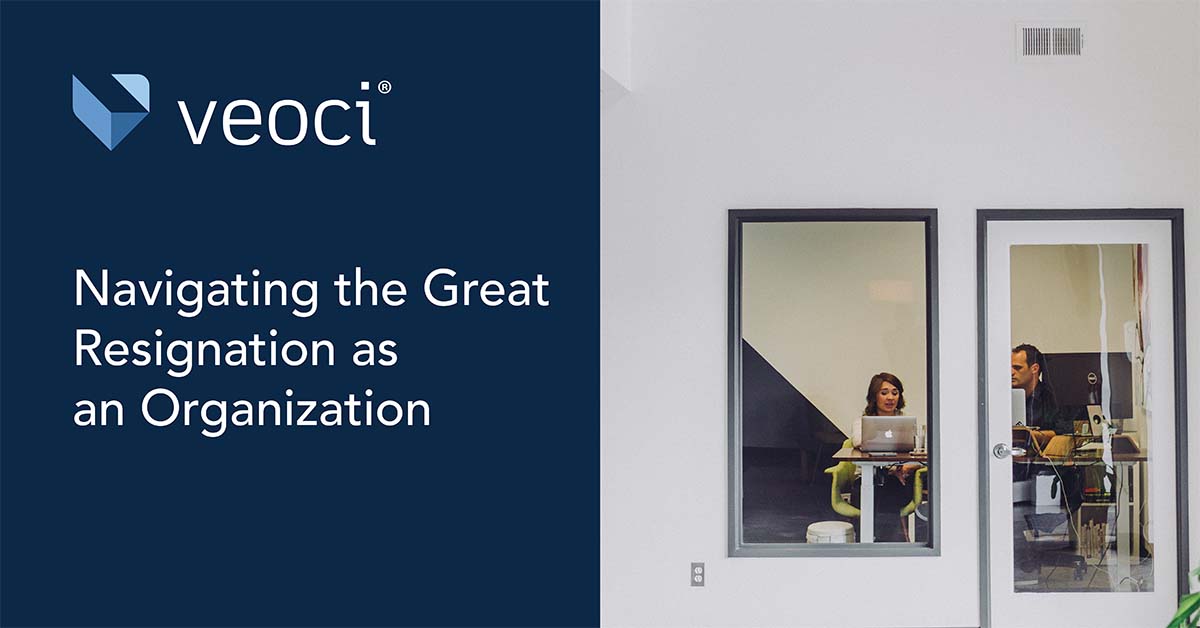We’re in the midst of the “Great Resignation.” According to the U.S. Bureau of Labor Statistics, over 47 million workers left their jobs in 2021. While many attribute these numbers to the pandemic, research suggests that this increase falls in line with the “quit” trend our country has been seeing for the past decade or so.
So what is to blame? A Harvard Business Review article, The Great Resignation Didn’t Start with the Pandemic, suggests Five “R” factors: retirement, relocation, reconsideration, reshuffling, and reluctance. While some industries have felt this movement’s effects more than others, there isn’t a field that hasn’t felt the shift.
Addressing excessive employee churn means making a few changes. A complete overhaul of the hiring approach or new talent recruitment tactics may help numb the sting of frequent departures. Firms must also work on talent retention and maintaining the quality of content and production through constant turnover.
This is where the issue reveals itself: the loss of institutional and procedural knowledge. The increase of retirements and resignations means the loss of experience built across cumulative decades. The generational gap is massive in certain fields and threatens an unprecedented challenge.
When team members leave, their workloads need to be reassigned. Taking on these responsibilities can be daunting when individuals need to quickly learn and understand new processes and procedures.
Luckily, there are steps that can be taken to address and limit the loss of this knowledge.
Ut Est Rerum Omnium Magister Usus
No, I didn’t forget to change the header from lorem ipsum. This section’s title is a proverb from Julius Caesar, one I bet you’ve heard before: experience is the best teacher.
The knowledge that industry veterans have is indispensable, meaning that taking the time and effort to capture as much as you can from them before the most common of the Five R’s, retirement, is imperative.
So what kind of details are we looking to collect? Implicit and tacit knowledge.
Implicit knowledge helps ensure that best practices and skills are being upheld, and provoke a thoughtful conversations on the best way to solve problems. Tacit knowledge, however, is the type of information that can’t be found with a quick Google search. It comes with years marked with wins and losses.
Tacit knowledge is believed to be the hardest type of knowledge to capture. Practitioners often find it hard translate this knowledge. It creates gut feelings that inform practitioners on how to move forward.
What’s the best way to capture tacit knowledge, then? Ask questions, record meetings, allocate mentor hours, have an open forum for your department, and document everything. Store notes from Q&As and panels plus any and all recordings in an easily accessible place; in a digital platform like Veoci, you can gather these materials and create a library of institutional knowledge that anyone can turn to for questions.
This library will be an invaluable resource to your organization. This database will never replace the asset that are your practiced employees, but it will give newcomers a leg up as they begin their own education through experience.
Business Continuity and Processes
Business continuity plans (BCPs) are essential for the resilience of organizations. These plans, however, are usually discussed in the context of responding to a crisis, with an emphasis placed on how these plans aid companies in successfully navigating through an unforeseen event. Though this is all absolutely true, we don’t always have to view a BCP as a disaster-only tool.
There are some workplace departures that affect the organization more than most, but the majority of exits don’t call for a community-wide meeting or discussion. Nonetheless, this isn’t to say that the loss of a team member doesn’t demand acknowledgement and a plan on how to proceed.
Say one of your peers departs and you’re tasked with taking over an aspect of their job. Do you know what you were taking on or where to start? These conditions often lead to confusion and frustration while putting time, money and even safety on the line.
Each team or department should take care to have a working list of the roles and responsibilities each member is assigned. The list serves as a BCP when team members are unable to meet their responsibilities, whether it’s due to their absence or one of the Five R’s.
These plans need to be granular and fully capture the processes and procedures of each indicated responsibility. Identify key contacts and metrics, main forms, workflows, dashboards, secure logins and passwords, and outline the most important tasks. These steps may seem tedious, but collecting this information and turning it into a continuity plan will streamline the redelegation process.
Conclusion
The Great Resignation is forcing every industry to reevaluate the relationship between employees and continuity. What plans are in place to ensure operations continue when certain team members leave the organization? How are organizations maintaining the wisdom of industry veterans?
Fortunately there are tools available that make the overwhelming tasks easier. The benefit to this hard work is creating an even better environment for your workers, which as we have been shown, can be priceless.








